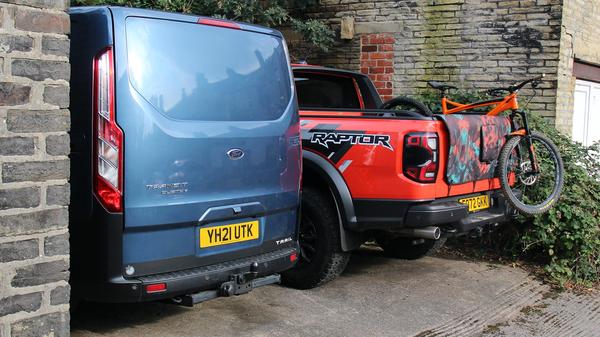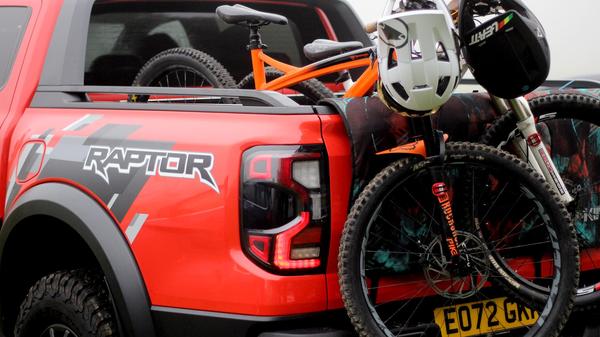Long Term Review
Living with a… Ford Transit Custom Trail (Part 15)
Can a van really work as an alternative to the traditional family SUV? One of the team has put his money where his mouth is to find out…
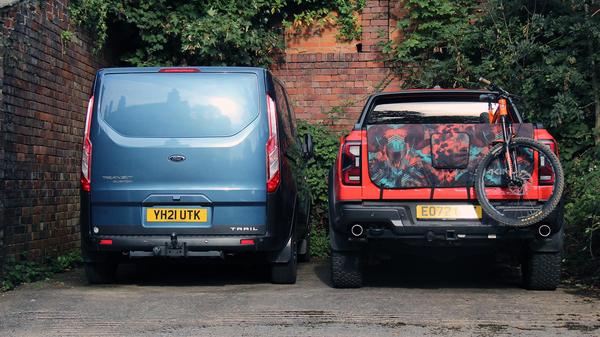

Words by: Dan Trent
Published on 21 September 2023 | 0 min read
Aspirational lifestyle posing is marketing gold for car manufacturers, which you see reflected in the overwhelming popularity of SUVs. But, applying the term literally, the people who need actual sports utility vehicles rarely buy 4x4s or crossovers. They buy vans.
Visit any car park where people do outdoorsy sports and they are pretty much all you’ll see, whether they be basic panel vans, family friendly ‘combis’ with a second row of seats or custom camper conversions. Thanks to lockdown inspired staycationing, the growing popularity of activities like mountain biking and people looking at different ways to spend that holiday budget more and more are considering vans as their next ‘car’. Indeed, in a recent Auto Trader survey 86 per cent of non-commercial ‘personal’ van customers said they are first time buyers, indicating a surge of interest. For nearly half of them hobbies or a change of circumstances are the main motivating factor, with two-thirds looking to buy new rather than used. Short version? Vans are now reaching an audience far beyond their commercial heartland and there's a significant crossover into the passenger car market as they become a more socially acceptable (or even trendy) choice for private users. Would you really want to run a commercial vehicle as a family car, though? And how is the buying and ownership experience different for those coming from passenger cars? We’re running a ‘double cab’ Ford Transit Custom to find out first hand… Skip to: Part 1 – Joining the van crowd Part 2 – Reality check Part 3 – Roadtrip! Part 4 – The facts of (van) life Part 5 – Putting the trail into Transit Trail Part 6 – Everyone loves a Transit Part 7 – Sure got the AdBlues Part 8 – Should I have bought an electric van instead? Part 9 – When is a van not a van? Part 10 – Turning up the volume Part 11 – The ultimate family road trip car? Guess what, it’s a van… Part 12 – Size anxiety Part 13 – Oil I really need Part 14 – Ford says ‘park the car’ Part 15 – Better than a van?
Visit any car park where people do outdoorsy sports and they are pretty much all you’ll see, whether they be basic panel vans, family friendly ‘combis’ with a second row of seats or custom camper conversions. Thanks to lockdown inspired staycationing, the growing popularity of activities like mountain biking and people looking at different ways to spend that holiday budget more and more are considering vans as their next ‘car’. Indeed, in a recent Auto Trader survey 86 per cent of non-commercial ‘personal’ van customers said they are first time buyers, indicating a surge of interest. For nearly half of them hobbies or a change of circumstances are the main motivating factor, with two-thirds looking to buy new rather than used. Short version? Vans are now reaching an audience far beyond their commercial heartland and there's a significant crossover into the passenger car market as they become a more socially acceptable (or even trendy) choice for private users. Would you really want to run a commercial vehicle as a family car, though? And how is the buying and ownership experience different for those coming from passenger cars? We’re running a ‘double cab’ Ford Transit Custom to find out first hand… Skip to: Part 1 – Joining the van crowd Part 2 – Reality check Part 3 – Roadtrip! Part 4 – The facts of (van) life Part 5 – Putting the trail into Transit Trail Part 6 – Everyone loves a Transit Part 7 – Sure got the AdBlues Part 8 – Should I have bought an electric van instead? Part 9 – When is a van not a van? Part 10 – Turning up the volume Part 11 – The ultimate family road trip car? Guess what, it’s a van… Part 12 – Size anxiety Part 13 – Oil I really need Part 14 – Ford says ‘park the car’ Part 15 – Better than a van?
What is it?
- Model: Ford Transit Custom
- Version: 170PS Double Cab in Van (DCiV) 300, L1 H1
- Spec level: Trail
- Options fitted: Chrome Blue paint (£780), Bi Xenon headlights (£660), dual side doors (£360), enhanced park assist (£360), Ice Pack 25 (£912), liftgate (£300), rubber floor in load bay (£120), three-pin socket (£72), rear-view camera (£300), Seat Pack 3A [heated seats] (£360), Thatcham Category 1 alarm (£300), towbar (£390), anti-pick door locks (£132) – all option prices including VAT
- Cost as tested: £43,206, including VAT (rrp)
We like
- Looks cool
- Tons of space
- All the kit you need
We don’t like
- Big to park
- Interior feels cheap compared to ‘normal’ cars
- A-road speed limits
Part 1 - Joining the van crowd
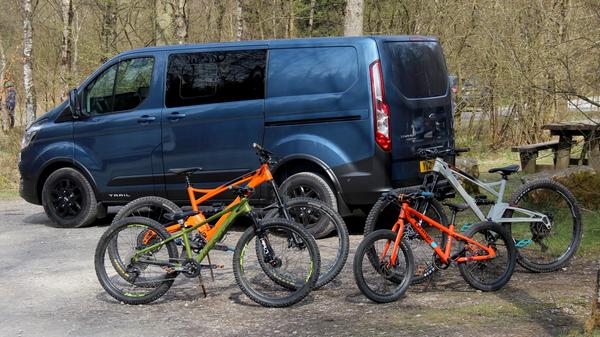
Mileage: 250
Fuel consumption: c. 37mpg
When I was a kid my dad didn’t lust after owning a Ferrari or a flash BMW. His dream car was a Transit, fond memories of a holiday job razzing round London in Securicor vans merging into ambitions of running one as the family car with bikes, camping clobber and all the rest piled in the back for day trips and holidays. And with that inevitability we end up growing up into a version of our own parents here I am, four decades later, putting my own money down to at last realise my dad’s long-held dream.
Motivations for doing so are simple. Like those in the Auto Trader survey mentioned in the introduction, I need a vehicle big enough to support the family hobby, which in our case is mountain biking. With my youngest on the verge of going up a bike size we were no longer going to fit the family fleet or associated clobber on or in a regular estate car, and nor do I have the money or inclination to buy a big SUV. It had to be a van.
In my circles VW Transporters are king, many of them expensively done up with bodykits, big alloys and other spangly features. Duly I went along to the local VW dealership to price one up, my jaw dropping at a bottom-line monthly cost greater than that of our monthly mortgage payments. Then I heard about a new Transit model coming out with a trendy Raptor-inspired grille, tough-looking outdoorsy styling and a Quaife limited-slip differential just like that used on Ford hot hatches like the Focus and Ford Fiesta ST, repurposed in this instance for extra grip on greasy surfaces. Known as the Transit Custom Trail, it fits in between purely commercial spec models and the more lifestyle ones further up the range.
Transits may not be as trendy as some but the lack of the 'fashion tax' and no-nonsense vibe at the Ford dealership was appropriate to the vehicle, the sales guy managing the socially distanced buying process efficiently and willing to strike a very attractive deal along the way. Active and Sport models really do come with everything but I really liked the Trail styling, meaning I had to option a few things like nav, heated seats and a second side door back in but it all worked out as decent value. I’ll talk more about comparative costs in a future update but one key thing to remember is that many commercial vehicle prices are quoted before VAT, given most business buyers don’t pay it. So when comparing van prices against those of equivalent cars remember to factor that extra 20 per cent in all your calculations.
Choosing your spec is also important, and a major attraction of buying new given the huge number of options available on vans. Indeed, the Transit pricelist makes Bentley’s bespoke options list look simple so it pays to have a clear sense of what you want, how much space you need for the things you’ll be doing and what kit you really want. According to our survey those coming from passenger cars like me have high expectations on this score, with most listing things like reversing cameras, sat-nav and other creature comforts as must-haves. I also wanted a liftgate rather than the ‘barn doors’ most Transits ship with and a few other things like a three-pin socket. All told I’m amused to see that the equipment list on my van is pretty much identical to Erin’s ‘luxury spec’ Fiesta Vignale and includes exactly the same Sync 3 touch-screen infotainment, self-parking, heated seats, reversing camera and other kit.
Size matters and I’m still agonising over whether or not I should have gone for the ‘L2’ long-wheelbase version over the standard sized L1. But the L2 is a lot of vehicle for parking and I’ve already constructed my own internal racking system to carry the four bikes, so we’re all good there. And with the sun shining, lockdown lifting and immediate holiday plans keeping us on home soil we’re all set…
Back to top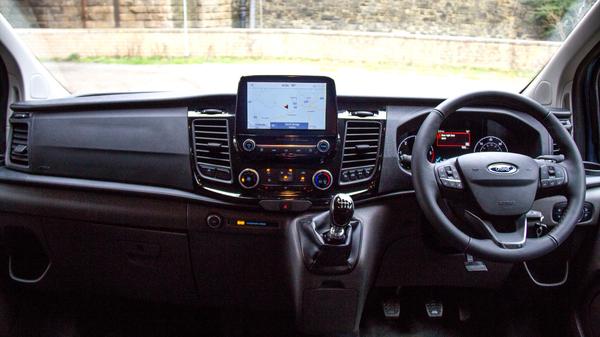
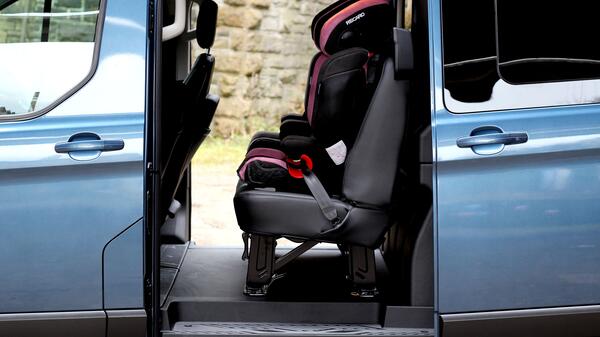
Part 2 - Reality check
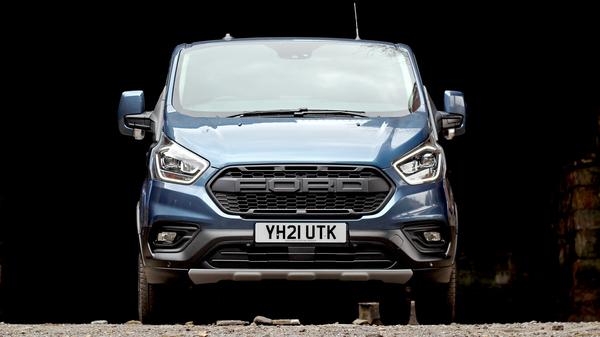
Mileage: 1,315
Fuel consumption: 37.5mpg
From the giddiness of taking delivery of a brand-new vehicle to it being tramped full of mud and generally feeling like a well-used family car took all of a few hours but we’re already wondering how we coped without a van. I’d claim it as my influence (though it’s likely just coincidence) but since my last update one set of friends has bought a used double cab Transit like ours while another has just ordered a Transporter as a family car, so it looks like that appetite for vans among ‘civilian’ buyers I reported from our Auto Trader survey really is playing out. Or is among folk I know, anyway.
But what are the financial realities of running a van as a family car? I did hear some horror stories about insurance, especially for Transits, and the first quote I got was pretty burly, even compared with the high-performance imported Subaru we were running before. As ever, shopping round helped and I ended up getting a decent quote from NFU Mutual, with the bonus being I get to talk to a real person in my local office rather than dealing with a call centre. I was amused to be asked how much ammunition or explosives I intended to carry, the agent explaining this was a question more usually directed to farmers and other commercial users!
One quirk of running a commercial vehicle that came as a pleasant surprise was the fixed-rate Benefit In Kind rate, which differs from the emissions-graded system used for passenger cars. For a van it’s a fixed taxable benefit of just £3,500, which you can split between multiple employees if you run it for a business. A Ford Kuga with a comparable 2.0-litre diesel engine would, meanwhile, be charged at 37 per cent of its value, meaning you’d be taxed on a benefit of over £12,000. So, if you can run a van as a company vehicle – even if you’re paying the VAT – you could save a chunk of money each month over an equivalent non-hybrid SUV or other large family car.
Anyway, enough talk of running costs and other such admin. Because it’s more fun looking at what the van lets us do as a family. With a long weekend biking in Scotland coming up I’ll have more to report on that side of van life in my next update…
Back to top
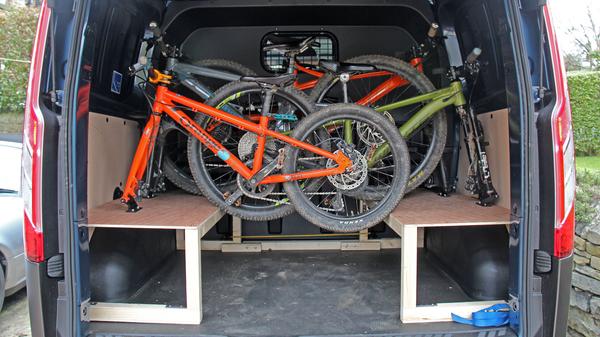
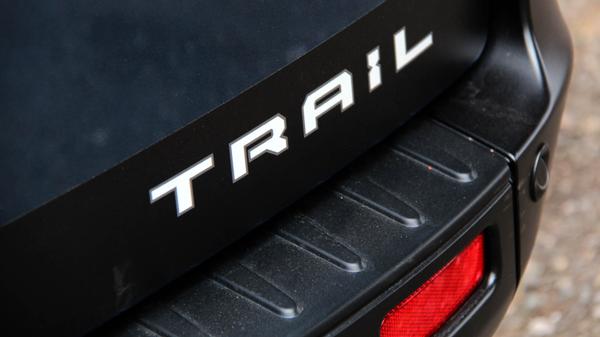
Part 3 – Roadtrip!
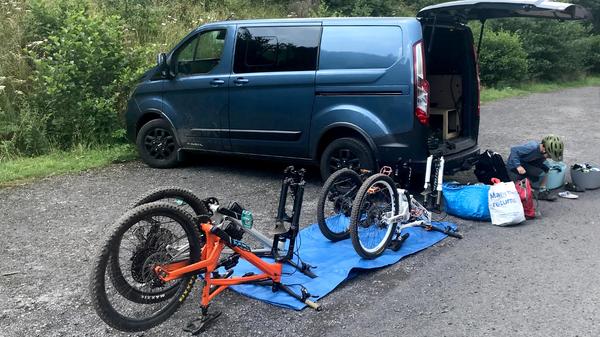
Mileage: 3,081
Fuel consumption: 38.3mpg (measured)
Having got the boring stuff about insurance and tax out of the way it’s time to talk about actually using the van as intended, and what I’ve learned in the first round of summer holiday road trips with the family.
As discussed last time, we first went four-up to Scotland, bikes aboard and for a weekend of riding in Tweed Valley. From my Yorkshire base I’ve got the choice of a boring plod up the M6 or the more scenic route over Northumberland, the latter seemingly less suited given it’s twistier and means an eye to the 50mph limit for vans on single-carriageway A-roads. We still went with it, though, and I took the option of riding in the back. The near vertical backrests aren’t perhaps the most comfortable, though the ability to stretch out my legs between the two front seats and great view of the road ahead is a fair compensation and the Transit is perfectly happy in this environment. OK, it’s a bit bouncier than a car given the suspension is geared to carrying heavier loads but the 170 horsepower engine is refined and powerful and returns getting on for 40mpg even in this kind of driving. And we were able to get to Scotland and back – nearly 500 miles all-in – with a quarter of a tank still remaining. Diesel may not be fashionable but no need for range anxiety here.
Come the summer holidays and it was more of the same, loaded with bikes (including an extra one for delivery to my brother), beach gear, a couple of guitars, sleeping bags and more besides. The raised bike carrying ‘bed’ I knocked up in the back is spot on too, leaving space for a carry-on wheelie bag and plastic Ikea tub for each of us, the latter perfect for carrying our respective sets of riding kit and it all sliding neatly under the false floor. True, there’s a bit of faff loading and unloading the bikes each time we arrive at the trailhead but I’ll take that for the knowledge they’re fastened in (see above about twisty roads!), they’re all secure inside the vehicle and it’s no worse than using the boot carrier I had on the previous Corolla estate.
In no-nonsense Ford fashion all just works, too. I know Erin isn’t a massive fan of the Sync 3 infotainment system the Transit shares with her Fiesta but what it lacks in bells and whistles it makes up for in simplicity, and there’s always CarPlay too. I also really appreciate the single button option to turn the screen completely off for driving at night.
As a vehicle for an active, outdoorsy family with a summer of staycation roadtrips I’m already struggling to see how we coped with anything less.
Back to top
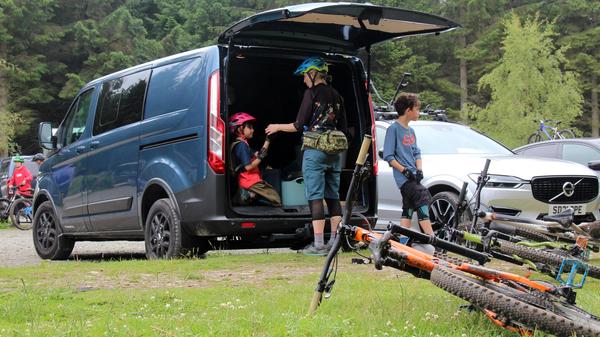
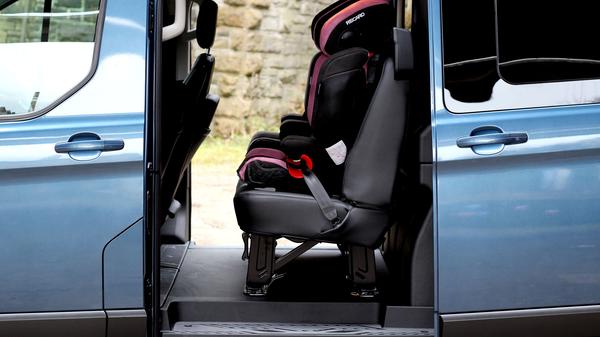
Part 4 - The facts of (van) life
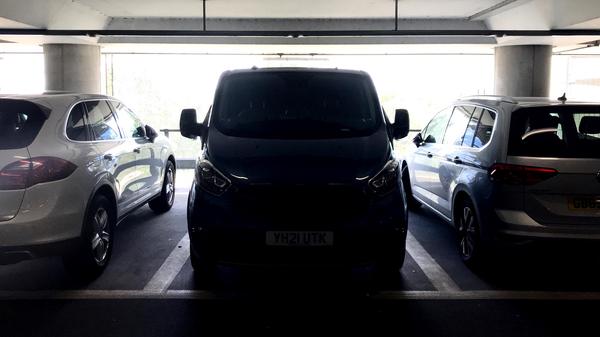
Mileage: 4,416
Fuel consumption: 38.9mpg (measured)
With over 2,000 miles racked up over the summer holidays alone it’s fair to say I’ve now tested the theory of whether or not a Transit Custom really works as a family car. And does it actually?
The obvious issue for those new to vans will be the size of the thing, and whether or not that’s a pain in regular driving situations. Logically no, given the on-road footprint isn’t too different from a Range Rover or other large SUV. The view out is even better too, with no tall bonnet to look over and much better all-round visibility, at least to the front and sides. Over the shoulder on the motorway isn’t too bad in my crew-cab configuration either, and the massive wing mirrors pretty much deal with blindspots. The lack of a window in the rear tailgate means you do have to live on them, and I’m quite keen to test out a retrofit ‘smart mirror’ Ford now offers – it’s basically a screen relaying images from the reversing camera that sits where you’d normally have your rear-view mirror.
Overall, it takes a little time to adjust to the size but, once you do, you realise parking is actually really easy given the boxy dimensions, your position over the front wheels and the tight turning circle. Obviously the cameras and sensors help but my standard-wheelbase Custom fits within most regular spaces. And if someone parks a little too close I can walk through from the ‘cab’ and exit through the sliding rear doors! I also appreciate the Trail’s plastic cladding in these situations, given it offers a degree of protection from the door clangers out there.
The only exception is height restricted car parks. Technically the Custom should fit under a standard two-metre restrictor but the clearance is tight enough to have me wincing and you’re putting a lot of faith in council tape measures and the hope the bar is actually two metres. I recently had to park in a multi-storey car park at Heathrow with a 2.2-metre clearance limit (I checked the website before to be sure) and even that felt tight, the sound of the aerial twanging against the restrictor making me jump in alarm.
The other thing to keep in mind are the lower speed limits on A-roads, and the fact a van of this size is restricted to 50mph on single carriageways and 60mph on dual, not the 60 and 70 of a regular car. It’s not too hard to stay within this on regular A-roads but some bigger and newer dual-carriageway ones feel very like motorways and a lightly loaded Transit can all too easily mix it with regular cars speed-wise. Handily I’ve discovered that the Eco driving mode actually restricts you to 71mph as well, so I’ve taken to using that on A-roads to avoid getting carried away…
The only other reality check I have to face is going to the local tip. The nearest one has very fierce rules limiting access to commercial vehicles, on the basis they don’t take trade waste. Another within the same local authority seems a little more chilled on that, though. You’d have to hope turning up in a crew cab van with child seats in the back would make it obvious you’re not a builder looking to dump plasterboard and rubble on the sly but it would only take one jobsworth to make it a wasted trip. Worth checking with your local tip if you think this may be an issue, and perhaps striking up a rapport with the folk on the ground to reassure them you’re a ‘civilian’ van user, given it’s an increasingly popular lifestyle choice these days.
Back to top
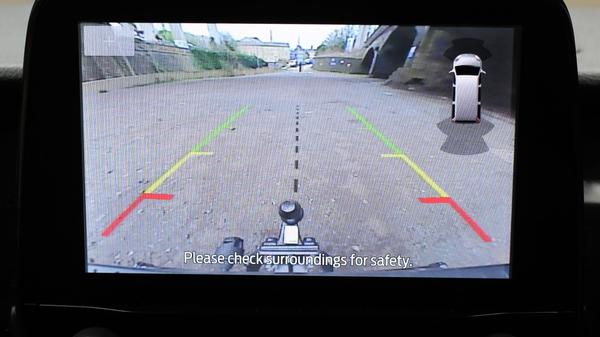
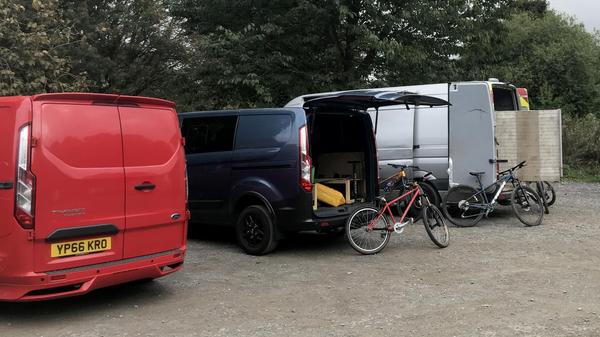
Part 5 – Putting the trail into Transit Trail
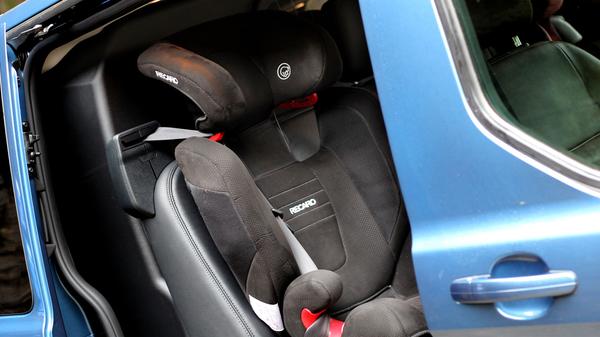
Mileage: 4,831
Fuel consumption: 38.9mpg
After a busy summer of roadtrips the Transit has had a slightly quieter time of late with it all getting a bit autumnal out there. I’m not saying we’re purely fair-weather cyclists. But we’ve either been sticking to smaller local loops or just doing other stuff. In fact, looking back through my records I haven’t put any fuel in it since the last report, though this is more a measure of the near 600-mile range on a full tank and scope to rack up a fair few days out without need to visit a filling station. Which is a blessing, given it swallows around £75 of diesel each time I do. I’ll call the fun we have on those outings a worthwhile return on investment, though!
Last weekend even provided a chance to test the off-road credibility of the Trail branding, toughened up appearance and fancy, traction boosting differential as I ventured beyond a crowded car park up a rough track to find somewhere to unload family and bikes. From a previous visit I know the path beyond is a popular – and legal – 4x4 route across the Peak District so I was amused to be following various hardcore 4x4 types up there in a mere Transit. Truth be told you’d have got up there in a regular car, but it was nice to get some mud on the tyres and have the option!
Meanwhile, one of the great things about a van is the blank canvas it provides for customisation to suit your particular needs. This can spiral out of control and I’ll confess a ‘pop-top’ bed installation on a Transit identical to mine looked an appealingly discreet mod, at least until I saw the price. In a similar vein a chat with Ford revealed their collaboration with a firm called BlokPod and a professional kite surfer – I had a look at their various options for carrying bikes and other kit and it’s basically a super fancy and very trick looking version of my own, rather more improvised wooden racking. Suffice to say, it’s easy to see how folk end up spending thousands on customising their vans and, who knows, it may well come.
For now, though, my sights are set a little lower and word from the back seat is the kids can’t hear the stereo, so I need to investigate adding some more speakers in the back. Other than that now the weather is getting colder and the drives darker I’m appreciating some of those extra boxes I ticked on the spec, like the heated seats and fancy self-dipping bi xenon headlights. They seemed indulgent at the time it’s nice having ‘big car’ tech on a van, and a much more pleasant place to be when warming up after a cold ride and driving back along dark, country roads.
Back to top
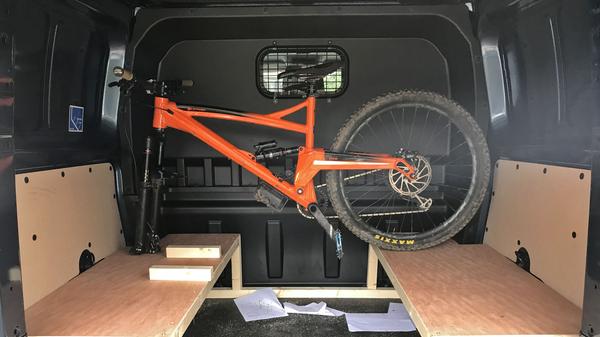

Part 6 – Everyone loves a Transit
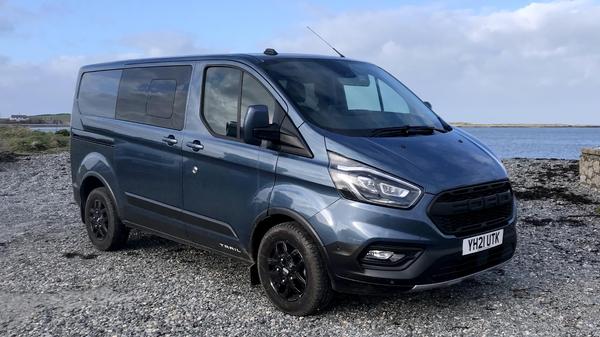
Mileage: 5,905
Fuel consumption: 39.3mpg (measured)
From the stereotypical tradesman or delivery driver to ‘lifestyle dads’ like myself there’s no escaping vans have a bit of a blokey image. None more blokey than a Ford Transit, to be fair.
Good news, though, because it seems women love vans too! This certainly seems to be the case in my circle of friends and family, where, without wishing to sound like some sort of mansplaining chauvinist, it’s fair to say the idea of running a van as the household’s main vehicle often took some ‘selling’ to sceptical other halves. But where it’s happened it’s been a roaring success, certainly going by the number of mums I’m now seeing in crew-cab Transits and Transporters on the school run at our local primary.
Why the initial scepticism, though? For some people there remains a bit of a stigma about driving a commercial vehicle, some developers even banning residents from parking them on new-build housing estates in apparent fear of lowering the tone. Given the increasing popularity of posh vans and campers among private buyers you’d have to hope these outdated attitudes are changing, especially given many people are paying premium SUV money for them.
The more likely complaint among any van sceptics in the household is they are intimidating to drive and park. Thankfully those fears don’t seem to last long, my wife now happily jumping in the Transit whether it be for days out biking with her friends or just a trip to the supermarket. A pattern repeated by my sister, who bowed to the inevitable when my brother-in-law was so impressed with our Trail he went straight out and ordered one himself. I’ve since been bombarded by enthusiastic messages from her saying how much she loves it, how easy it is to drive and how their regular car – an Octavia estate – feels too low down and difficult to see out of in comparison.
Car parks with height restrictions are the only real limitation I've encountered, these frustratingly common everywhere from shopping centre multi-storeys in town to the kind of outdoorsy places you’d want to take the family to live the lifestyle dream. Many are set at two metres, which a Custom should technically fit under but I’m not entirely ready to risk with the higher-riding Trail spec. I encountered one recently at 6’ 6”, which was definitely too low. Thankfully there was somewhere nearby to park but it could be an issue in some places and I have the sense some rivals like Transporters and Mercedes Vianos run a little lower than the Trail so would have fewer issues. Other than that it’s all good!
Back to top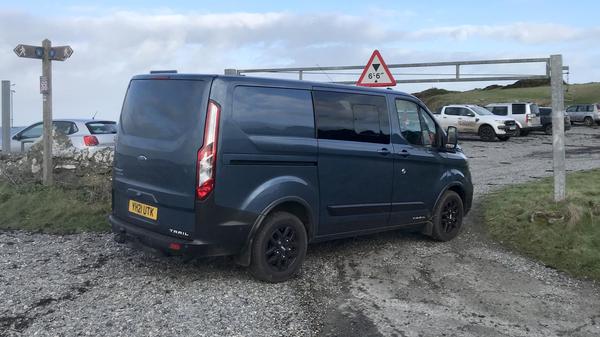
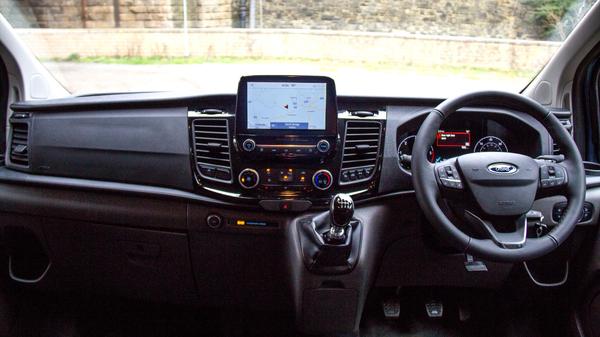
Part 7- Sure got the AdBlues
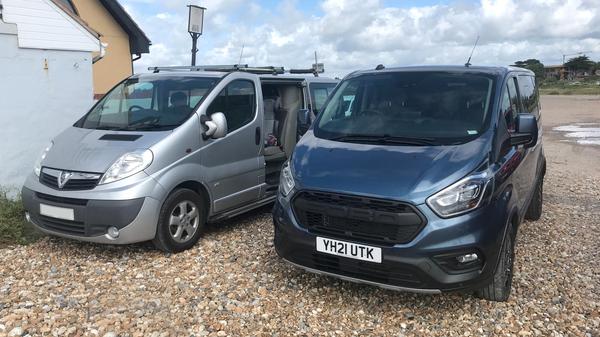
Mileage: 6,100
Fuel consumption: 38.3mpg (measured)
In all my years in this job I’ve never actually needed to top up the AdBlue on a diesel vehicle before, so there was a sense of novelty when the Transit’s dashboard alerted me to the fact this was required. A year and 6,000 miles into our ownership of the vehicle I wasn’t sure if this was to be expected or not but a journey of discovery into the recesses of the trip computer revealed there’s a ‘hidden’ gauge for the AdBlue tank I wasn’t aware of.
This informed me the 21-litre tank was now running low and, although the remainder would stand me 1,000 miles or so, that I should top it up ASAP. Googling it subsequently I discovered 6,000 miles is a pretty typical mileage for this to happen, so I was on schedule for that though it does depend on how the vehicle is used and the driving style.
Having walked past the AdBlue bottles they sell on most filling station forecourts countless times I wasn’t too stressed about where to source it. But the idea of ending up with two empty 10-litre plastic containers to get rid of didn’t seem too appealing (or environmentally responsible) so I did a quick search online and found a BP station nearby that has an actual AdBlue pump. At 79p per litre it cost about half what you’d pay for it in a single-use container, while the fact I just had to fill it up from a pump that went straight into the colour coded nozzle under the fuel flap rather than sloshing it in through a filler and spilling it over my feet made the diversion well worthwhile.
Why does all this matter? Well, diesel vehicles with AdBlue are cleaner thanks to the chemical reaction in the exhaust that strips out harmful nitrogen oxide, which is obviously a good thing. With the increasing spread of clean air zones like London’s ULEZ and the pending introduction of similar schemes into Manchester, Leeds and Bradford this will be increasingly important, as local friends of ours with an older Transit Custom are learning to their cost.
We live on the intersection of these new zones and our travels will, when they go live, mean we regularly drive through them, meaning their older Transit is going to cost them every time they leave home, despite it looking pretty much identical to ours. Another friend has recently sold his non-compliant VW Transporter camper and bought a newer one for exactly the same reason, so if you are contemplating a diesel-powered van it would be sensible to make sure it’s Euro 6 compliant. And find a local filling station with a dedicated AdBlue pump while you’re about it.
Back to top
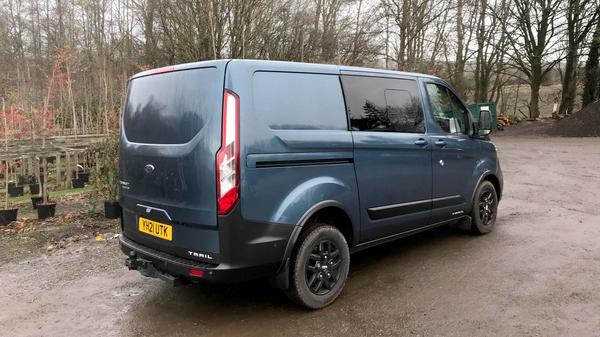
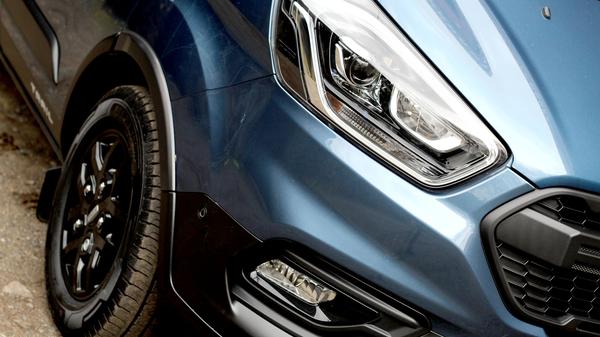
Part 8 – Should I have bought an electric van instead?
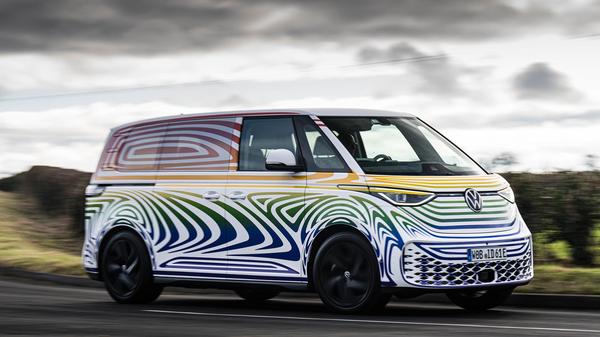
Mileage: 7,499
Fuel consumption: 36.9mpg (measured)
Given the Transit was the first new vehicle I’ve bought should I have waited a little longer and got an electric van instead? Given current diesel prices and the long-term threat of increasingly strict exhaust regs and low emission zones I sometimes worry I’ve backed the wrong horse here, a drive in VW’s all-electric ID. Buzz getting me thinking.
Although it’s a van the fact it looks trendy and runs the same running gear as electric passenger cars from Volkswagen, Skoda, Audi and Cupra means it’s aimed very much at ‘civilian’ converts like myself, and much more gentrified than equivalent electric vans from Citroen, Vauxhall, Peugeot, Nissan and Mercedes. These are really limited to short-range work like urban deliveries but the Buzz’s car-based battery and motor should be good for over 200 miles. Could I make it work?
Well, that’s a one-way trip to places like North Wales and the Tweed Valley in Scotland, both common destinations for our van load of bikes. Which is fine. But once you get to the wilds finding a charger to get you back might prove a little trickier.
Then there was the experience of my cousin and her family, who recently bought a Skoda Enyaq IV, which is of course based on the same running gear as the ID. Buzz. They optimistically loaded it up for a family ski trip to the French Alps but had an absolute nightmare with the public charging infrastructure. In the end it took them 36 hours to get there, including sleeping in various car parks along the way. Given we’re going the same way this summer and I know I can get there on a single tank of diesel that really doesn’t sound an appealing alternative.
Things are changing fast, though. I’m fresh back from driving the highly impressive E-Transit and Ford has just announced an all-electric version of the next generation Custom as well. Production starts next year and it’s got an official range of 236 miles, so on a par with the ID.Buzz. As it stands there already was an electrifried Transit Custom but it’s really a range extender hybrid with an onboard generator and you can’t get it as a double cab like ours, so wouldn't have worked for us.
Clearly, electrification is coming to vans but I'm yet to be convinced it would work for us. Or be anything like as affordable to buy. So, unfashionable or not, I’m still satisfied diesel was the right way to go.
Back to top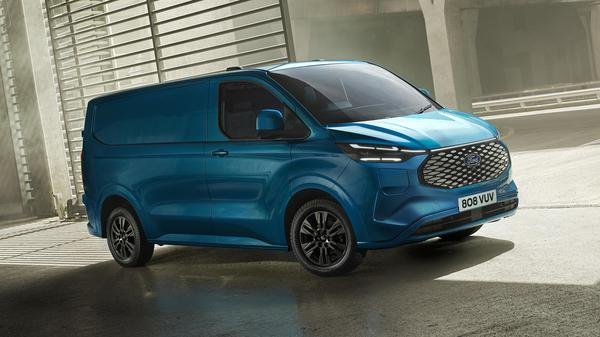
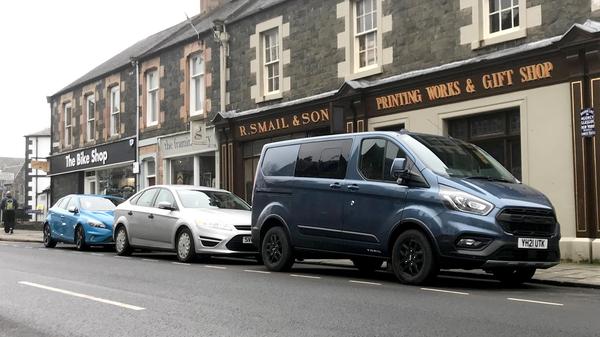
Part 9 – When is a van not a van?
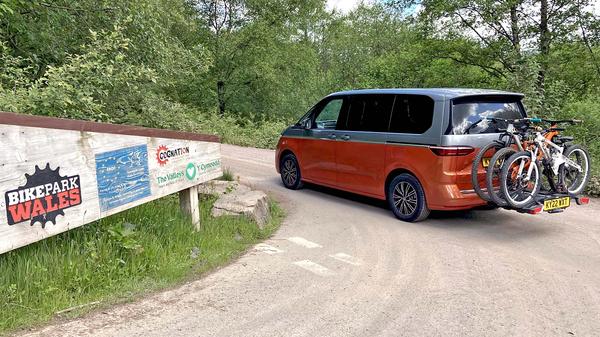
Mileage: 7,499
Fuel consumption: 36.9mpg (measured)
I started this adventure wondering if vans are becoming more socially acceptable – or even fashionable – as family transport for folk needing more space than a regular passenger car can provide. And, while I love my Transit, I concede Volkswagen leads the field here, the ranks of Transporters at every riding spot I visit (and, more recently, at the school gate) testament to that.
So, I was interested to try the Multivan, a vehicle sold by Volkswagen Commercial Vehicles and branded as a ‘T7’, implying it’s a successor to the current ‘T6.5’ Transporter. This isn’t strictly true, given the Multivan is actually based on the passenger car platform under the Golf and a million and one other mid-sized models from VW, Audi, Seat and Skoda. That’s fine, given it’s clearly designed to appeal to ‘van curious’ buyers who like the idea of a trendy Transporter but perhaps aren’t ready to go all the way. Could vehicles like this be a gateway for those lifestyle buyers wanting something cool to pack with people and kit in support of outdoorsy hobbies?
Coming from the utilitarian Transit the Multivan certainly felt in a different league of luxury and versatility. Where the Transit’s second row of three seats are fixed in position, feel a little too upright and have a bulkhead behind them the VW is a wide, open space into which you can slide and configure the five additional seats as you wish. Or take them out entirely. And with all the trim and tech it felt more premium car than dressed up commercial, as it should given you could have two of my Transits for the price of the one I borrowed.
Setting aside the reliability wobbles addressed in my review does the Multivan actually work as a van, though? First surprise was it’s actually not that big inside, meaning a struggle fitting the four bikes and kit easily swallowed by the Transit. So, on went my Thule towbar rack instead. You can get a longer version of the Multivan with another 200mm of boot space, so that would probably be better. But the fully trimmed and carpeted interior looks a bit vulnerable and I don’t think I’d be as happy slinging muddy bikes in as I would with the dedicated (and sweep out) load compartment of the Transit. Nor are the bikes as secure on an external rack as they are inside the vehicle.
So, it falls down on practicality. Nor does it count as a commercial vehicle, which does mean car speed limits (a bonus) but also car rates of tax and Benefit In Kind.
But it still must be great as a family car, right? Yes and no. The plug-in hybrid aspect was impressive, the refinement and performance ditto while the kids were definitely more comfortable in the individual, reclinable seats. But, weirdly, it’s not as wide inside as it should be, and unlike a Transit, Transporter or similar, you’re not going to get three Isofix child seats across the middle row.
I wanted to like the Multivan, and applaud VW’s attempt to leverage its Transporter heritage to make MPVs desirable again. Those coming from a regular car will likely be amazed by the space and endless ways to configure the interior space, while also comforted by the level of trim and the driving manners. For me as a van user, though, it felt a bit style over content. For my money if you think you might want to get a van, just get a van. Still glad I did!
Back to top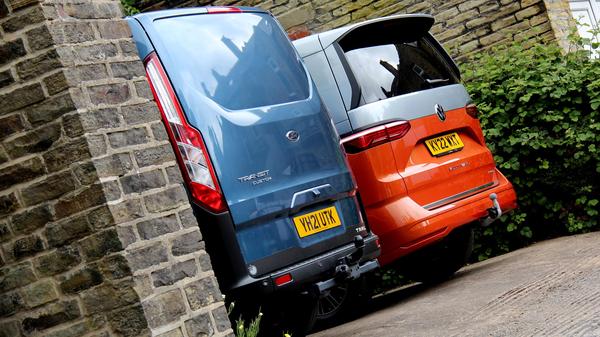
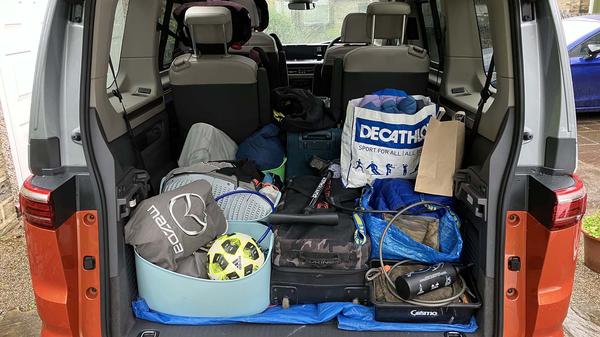
Part 10 – Turning up the volume
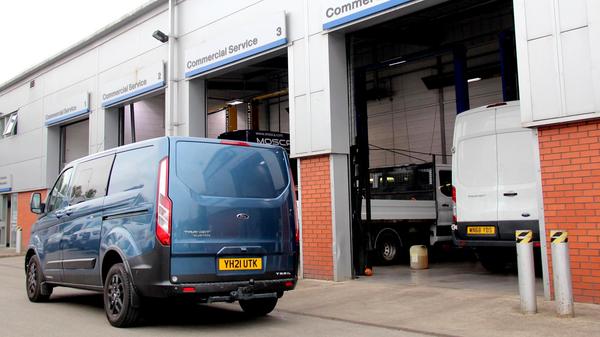
Mileage: 7,804
Fuel consumption: 36.9mpg (measured)
It’s not a typo – the mileage figure has hardly changed since the last update but the Transit has had anything but a quiet month, even if it hasn’t gone very far. In fact, as you read this we will (hopefully) be on our way to the French Alps with a full load of bikes and excited Trents. Four people, five bikes, two guitars and a ton of kit should, hopefully, all fit in without a squeeze, but there’s been some prep to get this far.
First up, addressing the complaints from the back seat that they couldn’t hear the stereo, given even a Double Cab in Van Transit Custom only has speakers up front for some reason. That did mean any racket in the back could easily be drowned out with a simple twist of the volume knob – appealing at certain moments – but it’s nice we all share similar music tastes, so it felt like something to get sorted before hitting the road.
A recommendation for a local specialist called Automotive Solutions in Brighouse came up trumps, owner Mark offering a long-suffering sigh at the last-minute nature of my request but generously juggling his schedule to fit the job in. After some chin scratching he suggested a couple of Alpine speakers mounted low in the plastic bulkhead, on the basis that with no fader control via the Sync 3 head unit it would offer the best balance of sound without blasting back seat passengers’ heads off. A happy by-product of this would be the entire rear load area effectively becoming a giant bass bin, vastly increasing the punch of the sound from this relatively minor upgrade. Credit to Mark, he delivered on the promise and, for the modest outlay, it’s transformed our in-car entertainment. Which, given we’re likely racking up a couple of thousand miles in the next couple of weeks, is no bad thing.
Immediately upon getting the van back I was straight down to dealer Ringways in Leeds for the annual check-up, which I’ll admit I’d been a little lax about. In my defence the Ford Connect app through which I can monitor the van’s service schedule hadn’t flagged it, and nor had Ringways chased me as I assumed they might. Given it’s just a basic inspection and little more than a box-ticking exercise ahead of the first real service next year hopefully no harm done. And it’s nice to know it’s fit for the journey ahead.
Meanwhile, I had hoped the fancy LED bi-xenon headlights would have the adaptive function found in some Fords where you can switch from left-dipping to right for driving abroad from the settings menu but, sadly, it seems the Transit ones aren’t that clever. So, on with the old sticker deflectors. With that and a bit of carpet off-cut repurposed into a floor mat for the back to protect the floor from muddy feet we’re good to go. It’s hardly a Bentley with a lambswool carpet and Naim stereo but, in Transit terms, the next best thing.
Back to top
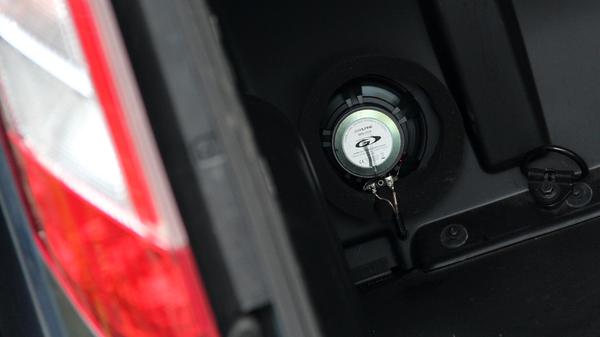
Part 11 – The ultimate family road trip car? Guess what, it’s a van…
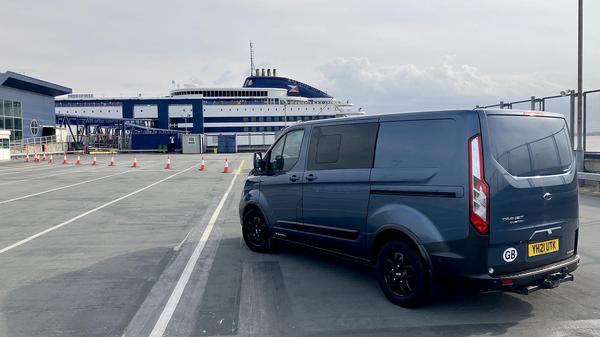
Mileage:9,406
Fuel consumption: 38.2 (measured)
Nice when everything works out as planned, right? Especially so when it comes to the first overseas family holiday since you-know-what, and the massive burden of expectation that carried with it. Indeed, the last time we all travelled to Europe was back in 2019 in a Transit Custom press vehicle I’d ‘conveniently’ booked in on review. Or, at least, that was the official line. Off the record I was also laying the groundwork for the idea of running one as our main family car, and testing the theory it really could work as such.
Reader, it works.
Five bikes, the tools and spares to support them for 10 days of punishing Alpine riding and all the bulky kit, body armour and helmets we’d need were just the start. On top of that we also had all the OTHER stuff a family needs for two weeks away, including general luggage, footballs, a badminton set, swimming stuff and more besides. Oh, and we still had space for a couple of guitars and a drying rack for the post-biking laundry. And a ton of other random bits and bobs.
In it all went, securely stowed in rear compartment without needing to sweat about parking up at services with thousands of pounds worth of fancy bikes hanging off a vulnerable rack or a broken window away from being nicked. And up front all four of us with room to spare in air-conditioned comfort, newly upgraded stereo blasting away and gutsy diesel engine happily delivering an easy 500-plus miles to a tank and nearly 40mpg, even with hilly Alpine passes and some prolonged 100mph cruising on the German Autobahn. Concerns? I had worried we’d be stung for commercial vehicle rates on the ferry but, given the Transit fits well within our chosen operator’s six metres long by 2.4 metres high ‘large car’ classification, was relieved to be waved through with the rest of the family cars.
Easy to feel smug, then. But when you see other families in the ferry queue in regular SUVs and estate cars sagging with bike racks, roof boxes and with extra baggage stuffed in around long-suffering occupants it’s hard not to feel just that.
Great minds think alike as well, and it was fun to meet up with my sister and her family in the Alps and park our Trail alongside the near-identical one they bought soon after seeing ours.
Got to love it when a plan comes together, even if it’s been a while in the making.
Back to top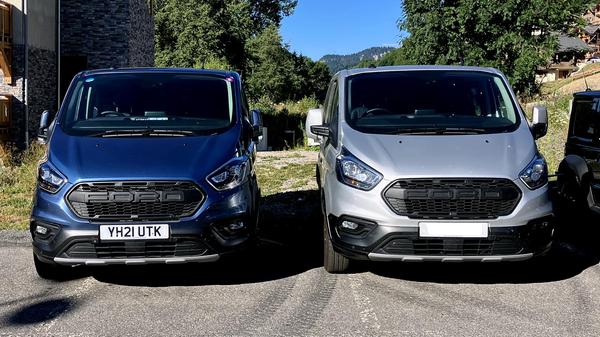
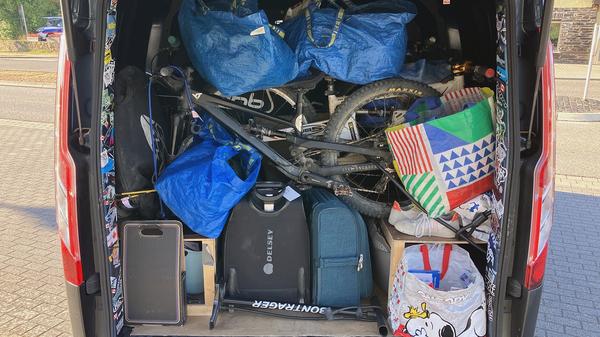
Part 12 – Size anxiety
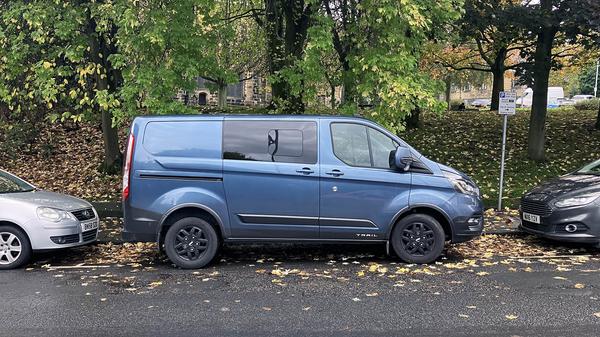
Mileage: 10,364
Fuel consumption: 38.9mpg (measured)
It was an innocent comment from a Twitter pal saying “nice, surprised you didn’t go for the L2, though” that set off my initial size anxiety about whether or not I chose the right Transit. That was on the day I took delivery, and for a good while had me anxiously checking every Custom I saw on the road (which is a full-time job, given it’s the UK’s best-selling vehicle) to see if the driver had gone L1 like me or opted for the L2. And torturing myself with the thought maybe I'd literally sold myself short.
To put some numbers on that an L2 Transit Custom is 5.3m long, against the 4.9m of my L1. That equates to an extra 367mm of load bay length between the bulkhead and rear door, visible in the profile of the vehicle in the wider gap between the side trim strip and the rear wheelarch. Trust me, I’ve looked. And looked again. On the road that makes it more than 10cm longer than even a long-wheelbase Range Rover . Which is a lot of vehicle to be parking and manoeuvring in everyday driving, like supermarket car parks and the rest. My brother, also a van owner, set me right by saying it would be a ‘leg iron’ in those kind of everyday scenarios. As it is, at a fraction under 5m long, my L1 has a similar on-road footprint to a typical large SUV or people carrier while being way more efficient about the way it uses that space.
Having done my homework on how much space four bikes would take up and then come up with my own internal racking to carry them I was satisfied L1 was the right call. The summer trip to the Alps with everything safely stowed seemingly vindicated that choice. Likewise the piece of parking in the picture above, where I smugly squeezed it into a ‘normal car’ space in a single move. Then my FOMO was ignited again recently after taking the kids to a bike race and seeing my mate Joe turn up with his L2, bikes smugly slotted in wheels on and lengthways into the loadbay. And now I’m back to checking out every Transit I see again to compare lengths and wonder if I made the right choice. Cheers, Joe!
This is all pointless, of course, because I can’t go back now. But the blessing and curse of vans is their endless configurability to fit every task, and the options that gives you. Which doesn’t help those of an indecisive nature.
I’m clinging to the fact that in my case I needed a van that could fit in with both the fully loaded roadtrip life as well as it could running the kids to swimming or going to the shops like any other family car. The fact it’s Mrs Trent doing much of the latter also played a part in the decision, given she’d be the one having to squeeze into parking spaces and selling the whole idea of van life to her was an important part of the process.
True, I’ve ended up with a little more faff than Joe and his ability to just throw the bikes in complete. But I can still carry them all safely and securely inside the vehicle, which is a million and one times better than the old days of laying them flat between old blankets in a hatchback or using a boot or roof rack. I’m telling myself it’s each to theirs, and Joe’s role as a pro cycling coach means he needs the space for his day job.
Conclusion? The correct size of van to fit into your life is … the correct size of van to fit into your life. I just need to regain the courage of my convictions. And stop measuring my Transit against every other one I see out on the road.
Back to top
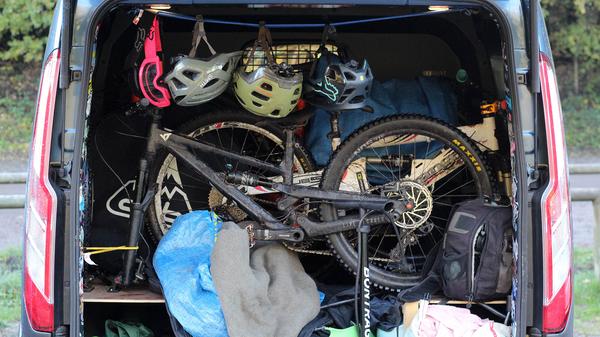
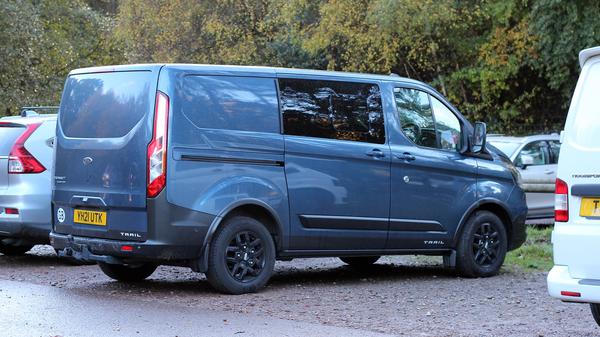
Part 13 – Oil I really need
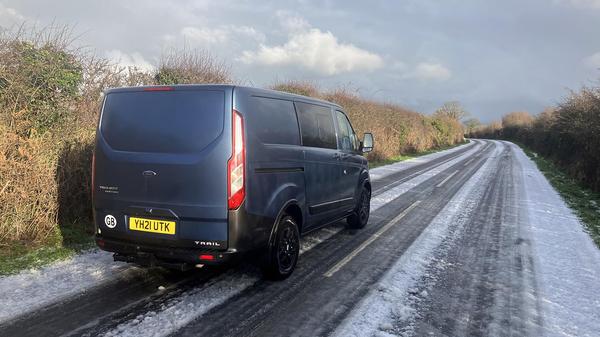
Mileage: 12,447
Fuel consumption: 38.7mpg
While I keep riding through the winter it pains me to admit that, as a family, I have to accept we’re actually fair-weather cyclists. Admittedly this has been learned the hard way after trying to drag the kids out in sub-zero temperatures on windswept Welsh hillsides. But there it is, the consequence of this is that the Transit has had a pretty quiet winter beyond the odd shorter day trip here and there. Which has at least saved us a bit on fuel, the 500-plus miles we get to a tank meaning fill-ups are often little more than monthly expenses. I’m pleased to see that, even with shorter journeys, average consumption is still only just south of 40mpg (measured properly, rather than going on the trip computer), which is pretty good given the size of the vehicle. Most importantly it’s good ammunition for winding up my Transporter-owning mates, given their ‘posh’ VWs seem a lot thirstier.
Those tables have been turned with a recent trip to the local Ford dealership for the first proper service, two years into our ownership. No problem with the idea of a once-over each year, the Ford app helping keep track of the service needs and reminding me to stay on top of it. But over £400 for what basically amounts to an oil change and quick check of brake fluid, coolant, tyres and the rest felt a bit steep. I’m telling myself if you average it out over the two-year schedule it’s not too bad, and though it’s probably the placebo effect I’m sure the engine is running that bit smoother with a sump full of fresh oil. Which it should do, given the price I paid for whatever liquid gold they (hopefully) poured in.
The two-year anniversary of ownership also meant insurance renewal time, which made it an expensive month. I’ve got better things to be doing with my time than doing the ring-around or handing over all my data to price comparison sites, and I value the personal touch of being able to ring the same person in the local office of NFU Mutual rather than have to sit on the phone to a call centre. So, even though the premium has gone up a bit they get my business for another year.
A light – and surprising – dusting of snow on the way to my mum’s in Anglesey recently also proved the worth of the fancy differential on this Trail version. It’s the same technology as Ford uses in its hot hatches like the Fiesta ST I enjoyed so much at a recent Goodwood track event, and basically means both wheels have traction even on surfaces with split grip where, on a regular Transit, one wheel could end up spinning the power away. As I saw the other day when I saw another one get hopelessly stuck in relatively innocent looking muddy grass car park. The fact the Trail can force power through both wheels keeps it gripping even on slippery surfaces, as it proved on the fresh snow. So, I was more than a bit smug it kept on trucking without even a flicker of the traction control light, indicating the diff was doing its thing. It’s all the more satisfying for being a quirky bit of tech for a van, and gives me another excuse to tease my mates my Transit is superior to their Transporters. For that alone it’s worth it!
Back to top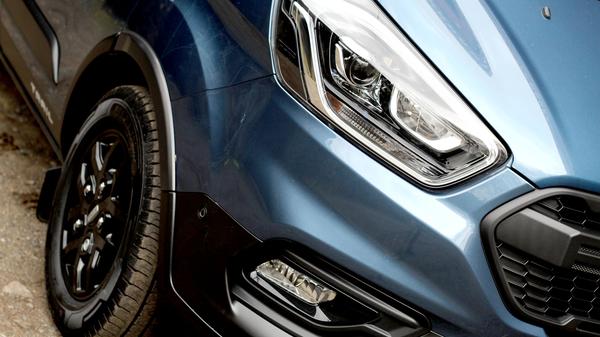
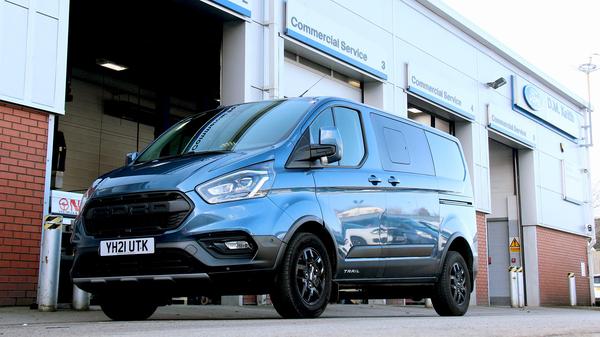
Part 14 - Ford says ‘park the car’
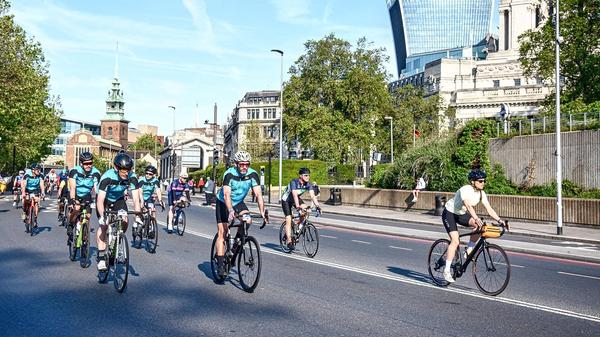
Mileage: 13,801 miles
Fuel consumption: 39mpg (true measured average)
Last month Ford asked me, a couple of Auto Trader colleagues and around 25,000 other cyclists to ‘Park the car’ and join the 100-mile Ride London into the firm’s spiritual UK home county of Essex. A strange initiative from a car company, perhaps, but one Ford Europe boss Stuart Rowley shared in an announcement last year as part of its goal of making us use our cars (or, in my case, van) less and our bikes and legs more.
With the organisational muscle of the London Marathon team, Transport for London and Essex County Council (among others) behind it the Ride London is a huge event where roads are closed to all vehicles and the capital and the roads out of it are turned into some sort of cycling utopia for a day. That or a two-wheeled 28 Days Later where the normal population cowers as the streets are overrun with Lycra-clad hordes with strange clippy shoes, depending on your viewpoint.
To be fair, the general response to the event seemed enthusiastic, and the good people of Essex very welcoming even with all the disruption of road closures and the rest.
On the day I had the dilemma of how literally to take Ford’s directive, having based myself in Lewisham and facing an additional nine-mile trip to our dawn rendezvous on The Mall. Sunday parking rules meant I could easily have slung my bike in the Transit, parked it somewhere round Waterloo and rolled the last mile or so but, with all that was going on, the potential faff and the fact it didn’t really feel in the spirit of things I decided another nine miles on top of the 100 of the main ride wasn’t going to kill me and left the Transit parked up. A chilled pedal through deserted South London streets with growing numbers of other Ride London participants doing the same was my reward and got the blood pumping ahead of the main event, which turned out to be an absolute blast with myself, Auto Trader colleagues Paul and James and a group of other guests all riding in our ‘Park The Car’ team jerseys. For the moments we managed the discipline to ride properly as a group we kept up enough pace to carve along the Essex lanes like some sort of pro cycling team (or so we kid ourselves), before stopping at a pre-arranged pub for a light lunch and continuing on our way to the finish at Tower Bridge.
A fun day out, and thanks for having us, Ford!
Back to reality and my wife has been taking advantage of the Transit’s load capacity to send me off and collect the various bits of furniture she’s been buying. Not all of which has gone to plan. The full bulkhead between the seating area and the load bay is great, helps refinement and keeps us separated from the bikes in normal use. But it does rather limit the size of things you can carry, and the 200cm sides of a wardrobe weren’t going to fit, no matter what I tried. I couldn’t face the indignity of asking one of my (bulkhead free) Transporter owning mates for help so gave up and returned later in the DS 4 to carry the long bits laid flat alongside me across the seats. Between the two of them, then, I had the vehicles to do the job. The less said about my attempts to reassemble the bits of wardrobe once I got home the better. Too soon, and all that.
Additional photography by Ford and Sportograf
Back to top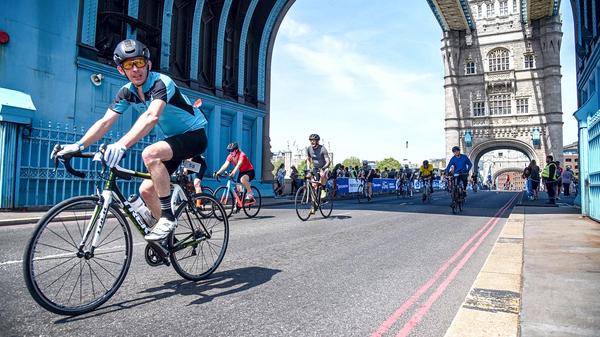
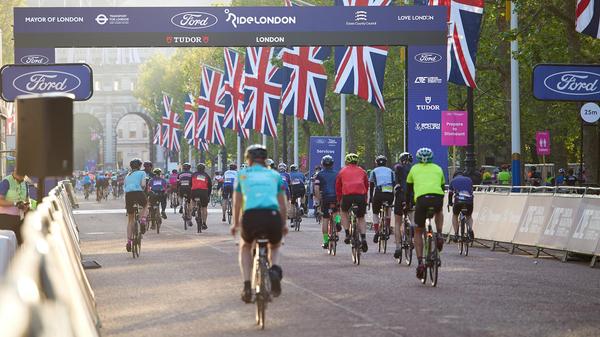
Part 15 - Better than a van?
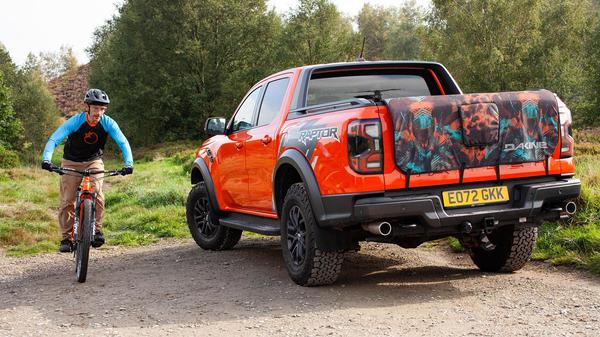
Mileage: 16,400
Fuel consumption: 40.3mpg (true measured average)
At last a challenge to my claim a double cab Transit is the ultimate vehicle for a lifestyling, bike mad family of four! And from within the Ford family, in the shape of the formidable Ranger Raptor.
I’ll confess, the Raptor inspired grille was one of the main things that attracted me to the Trail version of the Transit Custom, shallow as I am. But the big pick-up is the real thing, towering over my van and pumped up to the max. I could be all purist about it and say mountain biking is all about getting out into nature and enjoying the great outdoors. But at least as big a part of it is the posing, and the obsession with kit. And here a Transit – even one with a Raptor grille – plays second fiddle.
Lifestyle users like me are the Raptor’s prime audience, given it doesn’t have the payload to count as a commercial. And for a mountain biker it looks just about perfect. The fancy suspension that makes the Raptor such an effective off-road tool is by Fox, the brand’s forks and shocks also synonymous with the mountain bike world. So, there’s crossover there. Dakine is another familiar brand from the world of action sports, and the tailgate pads it makes are the perfect finishing touch to a pick-up like the Raptor, given you can just sling your bike in the back, hook the front wheel over and you’re good to go. This isn’t just practical, it also looks way cool.
To that end I booked the Raptor out to attend the Peaty’s Steel City Downhill race in Sheffield with my son, reasoning we’d be the toast of the paddock turning up with this, the orange paint coordinated with our Orange bikes. And, yes, we felt pretty cool.
So, better than the Transit, then? For pose factor, absolutely.
Practically speaking? Yes, for the ease and speed of loading and unloading the bikes. But then the reality check. Because it’s that easy anyone could have them away in the time it takes to stop at a red traffic light. True, you can lock them into the load eyelets in the back. But that kind of defeats the object, and it’s an even bigger worry at services or anywhere else you may want to park up for some time. Then there’s the carrying capacity. We load our biking kit into individual crates, which go under the bikes. But the load bed of the Raptor is actually smaller than that, and I had to slot the crates around the bikes. They were also exposed to the elements, so if it rains on the way to the trails all your stuff is going to get soaked.
And don’t even ask about running costs! The Raptor I tested cost over £60,000, or half as much again over what I paid for my Transit. In my hands it was doing about 23mpg as well, against over 40mpg in the van. And because it doesn’t qualify as a commercial vehicle you can’t run it on a business for the cheaper Benefit in Kind, or claim the VAT back if you’re registered.
So. I loved having the Raptor for a few days, it was the absolute business for turning heads at the bike race and a complete hoot to drive. The kids adored it as well. But back in the real world? I’ll stick with my van, I think! It’s still got the same grille, after all.
Additional photography: Liam Money/Orange Bikes
Back to top
